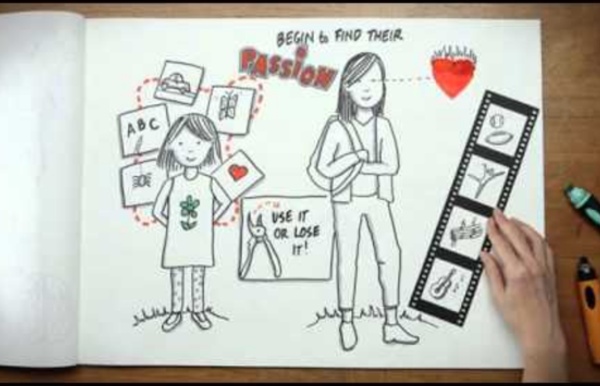



http://www.youtube.com/watch?v=0O1u5OEc5eY
Related: Reinforcement vs. Punishment for Teenagers • Teen Brain • Adolescents: Are they from Mars? • A Parents Guide to Understanding AdolescentsIdentity vs. Role Confusion in Erikson's Theory Identity versus confusion is the fifth stage of ego according to psychologist Erik Erikson's theory of psychosocial development. This stage occurs during adolescence between the ages of approximately 12 and 18. During this stage, adolescents explore their independence and develop a sense of self. According to Erikson, people progress through a series of stages as they grow and change throughout life. During each stage, people face a developmental conflict that must be resolved to successfully develop the primary virtue of that stage.
Adolescent Identity Development: What to Expect in Teens Adolescent Identity Development: The Factors of Change Among the profound and exciting changes taking place in adolescence is the process of self-discovery. Our teens are working to figure out who they are, making adolescent identity development a central feature of teen life. Young people’s identities are shaped by lots of factors — family, cultural and societal expectations, experiences with institutions like school and the media, and friends. Young people also take active steps and make choices that shape their identity. What is typical adolescent behavior? Adolescents have the reputation for being surly, uncommunicative, moody, argumentative and flippant - sometimes all at the same time! These behaviors, when exhibited from time to time, may be normal for teens because being a teen is tough. So you may want to understand the typical underlying causes that might be leading to these less attractive teen traits. First off, your teen is going to try to gain some independence, which can lead to challenges to parental or school authority. Second, your teen is having a bit of an identity crisis as he/she also tries to figure out who he/she wants to be.
Stages of Adolescence By: Brittany Allen, MD, FAAP & Helen Waterman, DO Adolescence is the period of transition between childhood and adulthood. It includes some big changes—to the body, and to the way a young person relates to the world. The many physical, sexual, cognitive, social, and emotional changes that happen during this time can bring anticipation and anxiety for both children and their families. Understanding what to expect at different stages can promote healthy development throughout adolescence and into early adulthood. Early Adolescence (Ages 10 to 13)
Why Is Teen Identity Development Important? Though it can be hard for parents to let go and acknowledge their teen needs external help, a credible adventure therapy program can relatively quickly and positively change your son or daughter’s life for the better. Psychologist Erik Erikson advocated that teen identity development is fostered by experiences that allow individuals to express their individuality and receive feedback and validation from others. Adventure therapy programs provide experiences that promote healthier relationships and positive identity formation in teens. 11 Common Problems Of Adolescence, And Their Solutions Adolescence is the age of change and a transition phase from childhood to adulthood. It is a vulnerable time when children might develop unhealthy habits that grow into problems in their adult life. Behavior issues of adolescence, which are quite common, also crop up during this time, making it impossible for parents to reach out to their teenagers. Read this post to know about the major problems of adolescence and how you can help your children avoid or come out of them.